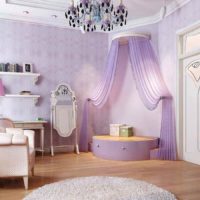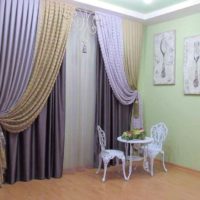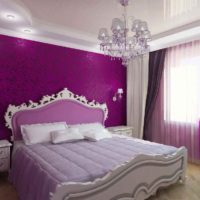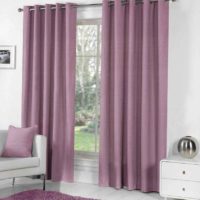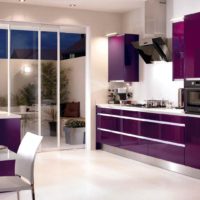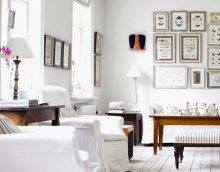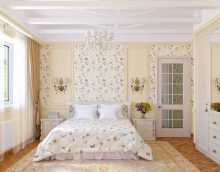Lilac color in the interior - spring mood every day
In vain, the lilac color is considered suitable only for children's rooms. In the design of a bedroom or living room, you can not meet him often, but in vain. It is a delicate shade of purple that creates a special aura in the room - mysterious and sophisticated.
Content
The color of lilac through the eyes of a psychologist
Psychologists consider purple to be unique. It contains two tones - blue and red. Depending on their ratio, many different shades are obtained.
To get a lilac tone, white is added to the two main colors. Thus, the two colors symbolizing the feminine and masculine, two opposites, are combined in a new tone, forming something new. White restrains, hides the activity of these two colors.

Purple color is unique
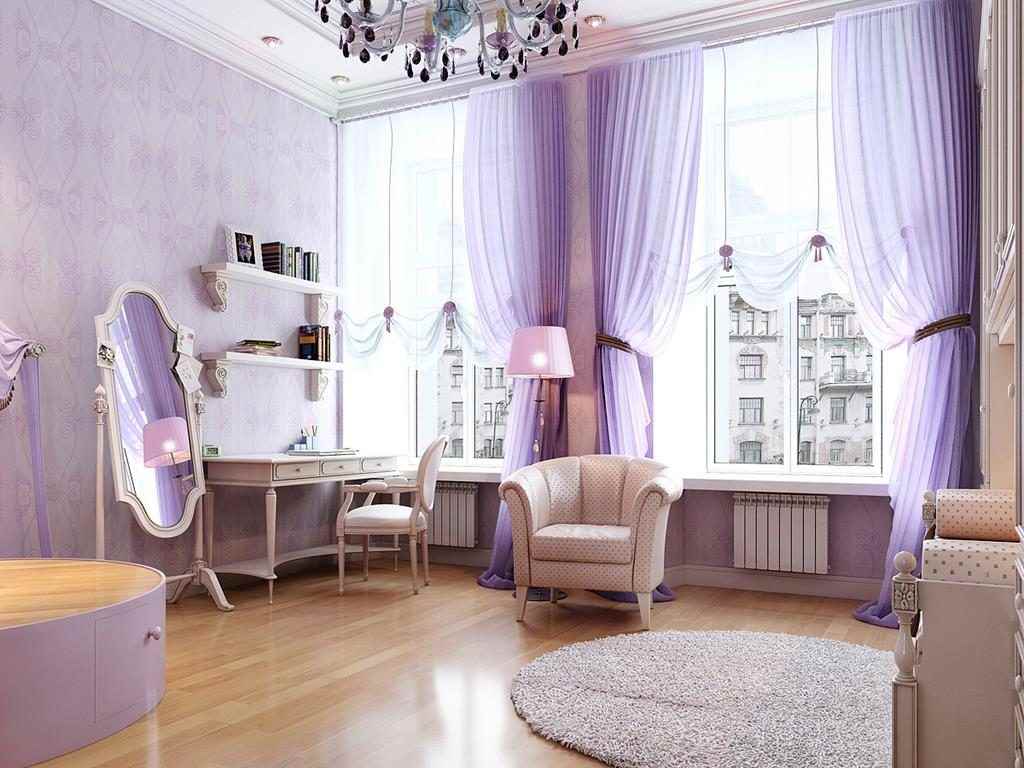
Violet is not very popular in the interior.

To get a lilac color, you need to mix blue and red
Children show interest in the lilac shade only in adolescence, which indicates the vulnerability and sensitivity of the fragile children's psyche.
Adult lovers of lilac are also not so simple. These are people of fine organization of the soul, creative, refined natures. They are attracted by the lilac color in the interior - it brings a feeling of lightness and airiness to the room. In the hall, bedroom or bathroom, he is able to create a harmonious atmosphere in combination with other tones.

More often lilac color is used in the design of children's rooms
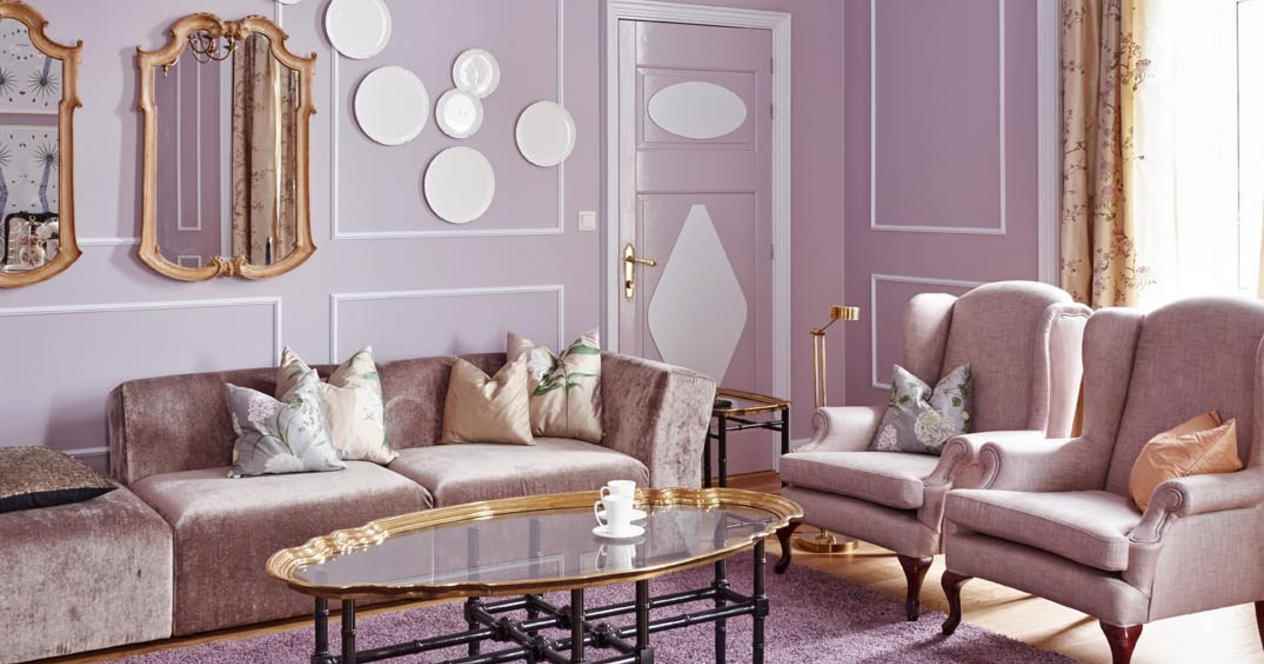
Lilac color can create a harmonious atmosphere
Lilac color matching
Despite the fact that the lilac color itself is a variation of purple, depending on the ratio of red, blue and white colors in its composition, they distinguish:
- pale lilac;
- directly lilac;
- bright lilac;
- lavender;
- amethyst;
- blue-lilac.

Lilac goes with many colors

Lilac furniture will perfectly complement the interior of the room

More harmoniously lilac color is combined with light shades
White and shades close to it are perfectly combined with all tones - from dark milk to snow-white. However, the best combination will be with light shades - pale lilac and lilac. The interior will gain lightness, airiness. When consuming more saturated colors, use them sparingly.
- Light shades of gray and steel can be combined with lilacs both in modest minimalist and sophisticatedly luxurious interiors.
- Soft pink, light green and mint tones - make the room “warmer” and more comfortable, visually push the boundaries, filling the space with light.
- The combination of lilac with blue, turquoise helps to create a calm, peaceful atmosphere.
- Light lilac background is ideal in order to focus on bright purple, purple or red interior details.
- The combination with a yellow-golden color scheme will give the room a touch of sophistication and wealth.
Important! Combinations of lilac color with gray, chestnut, light violet tones are considered the best, experiments with red, orange, brown, yellow and black colors are not recommended.

Lilac goes well with white

When using more saturated colors, use them sparingly
Recommendations for use
Interior design using lilac must be done carefully, without oversaturated space. Especially carefully you need to combine different shades of one color.
Designers recommend.
- Before choosing a combination of colors, decide whether you want to see the room - “warm” or “cold”.
- The room should only have one bright color - if it is lilac, then it should be complementary or accent.
- Lilac color looks better in spacious rooms than in small ones. For a bathroom or a small room, it is permissible to use only pale lilac shades.
Important: the interior in lilac tones has a calming effect on a person, so the color is suitable for decorating bedrooms and nurseries.

Interior design using lilac must be carefully

There should be only one bright color in the room
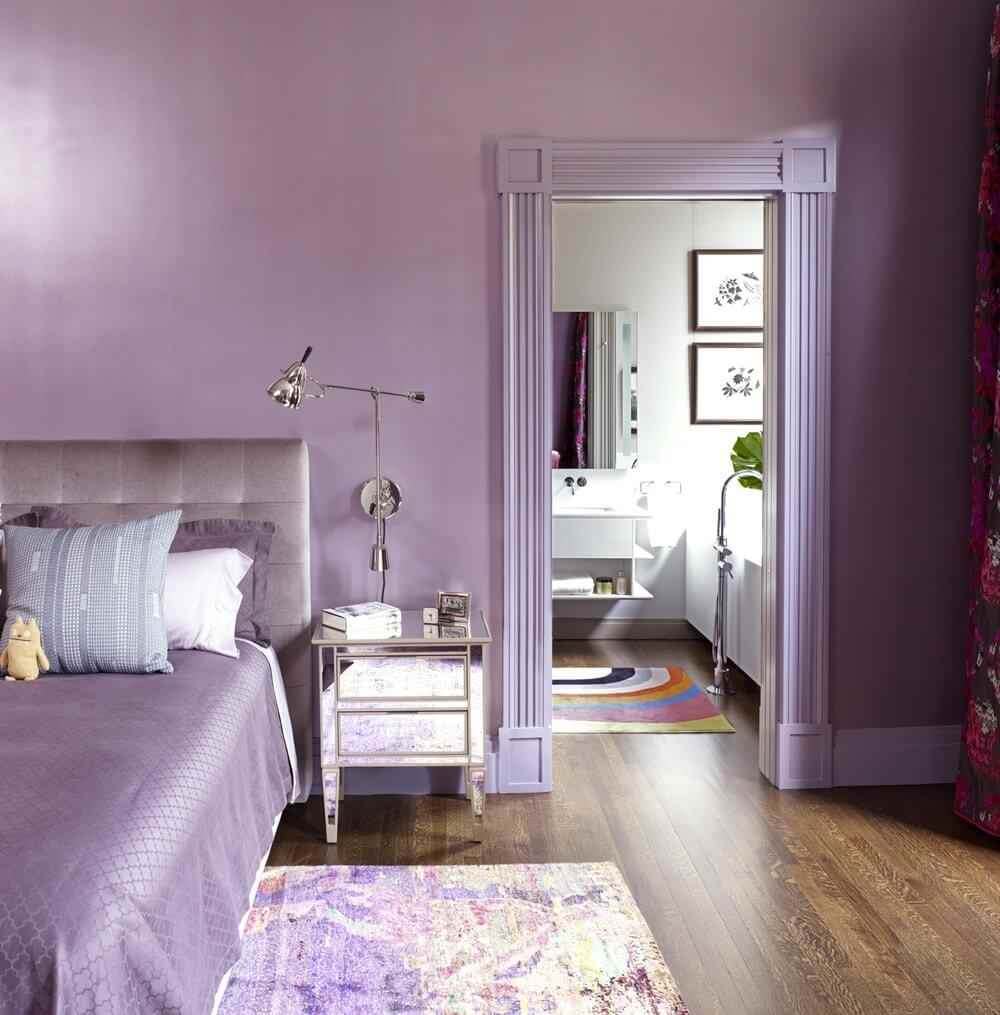
Lilac is more suitable for spacious rooms
All shades of lilac can be divided into 3 groups.
|
Hue |
What rooms is suitable |
|
· Warm pastel shades |
Bedroom · children's room · bathroom |
|
Saturated tones |
· living room · canteen · study |
|
· Bright and dark shades close to purple |
· Recommended only as an accent color. |

Warm pastel shades are more suitable for a bedroom.

Lilac color is perfect for the bedroom
Lilac color in different interior styles
The choice of color largely depends not only on the functional purpose of the room, but also on the style of the interior. So, the classic design prefers a white or delicate lavender shade, one of which will become the background, and the second - additional. You can dilute them with silver or golden blotches.
Modern laconic minimalism prefers cold shades. Additional may be white, cream or gray. But Art Deco loves bright colors, and rich purple walls can serve as a backdrop for brown interior elements, complemented by golden details. The interior will be completed if the window is decorated with lighter textiles.
Favorite shades of Provence style are lavender, blue and purple. When creating a stylization, both monophonic wall decoration and a floral print with the same shades can be used. It is advisable to combine them with each other - if the walls are plain - textiles with floral patterns or vice versa. The interior will be complemented by light furniture with “traces of time” - the effect of wear, small cracks in the paint.

Violet color goes well with many styles

For modern style, it is recommended to use cold shades.

In some cases, purple can be used as an accent.
The striking design of the Art Nouveau room can combine black and lavender colors. The white-black interior with bright inclusions of lavender looks original. It can be decorative pillows, curtains or a poster on the wall, soft padded stool near the dressing table. Such details should not be many - just two or three.
Country style, distinguished by its commitment to natural, natural colors, does not refuse lilac. The main background color - brown - can be complemented with details of lavender color. It can be ceramic vases, a bouquet of lavender on the table.

Room decoration in one color will look very beautiful and unusual
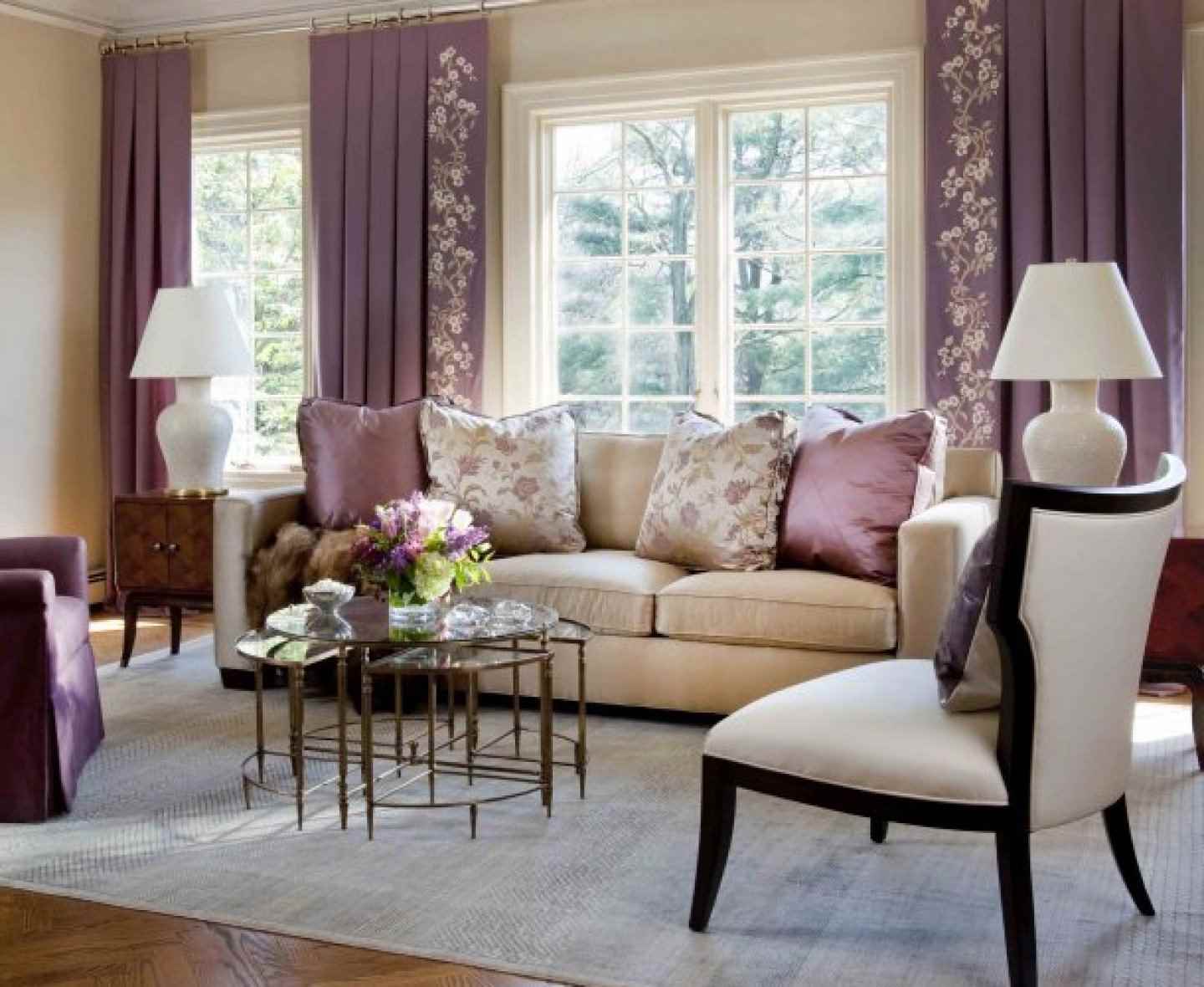
Violet color fits most styles
Lilac room
Of all the rooms in the apartment, perhaps only for the kitchen they do not recommend applying shades of lilac in the decoration, because they reduce appetite. In all other rooms, purple tones are acceptable.
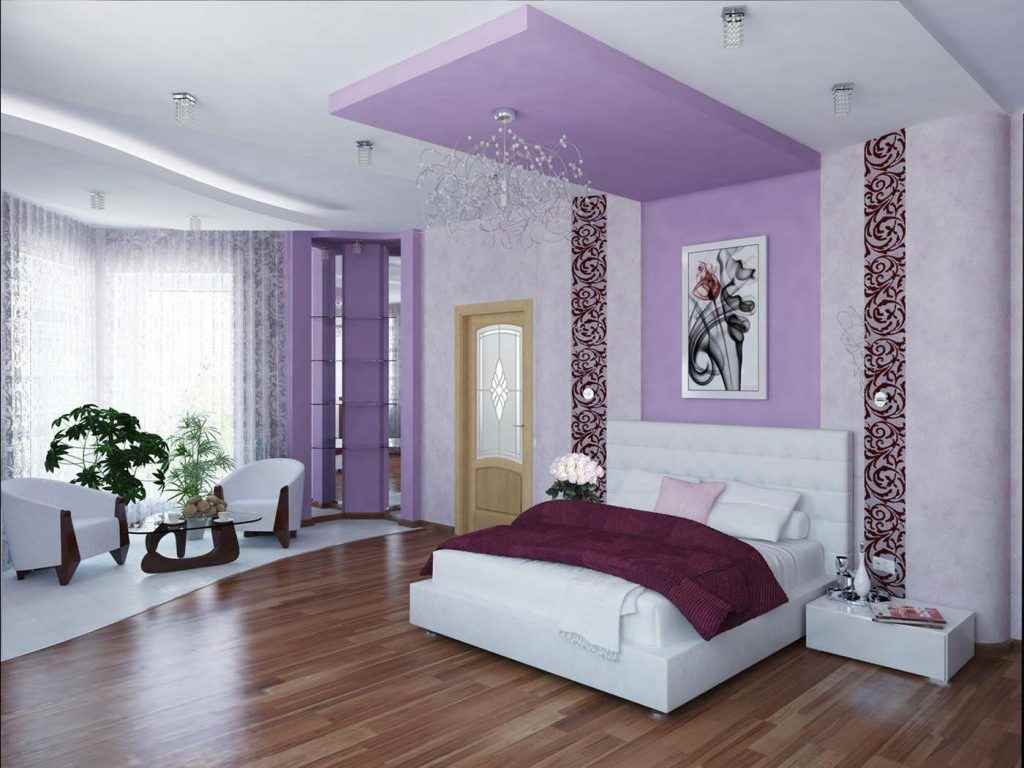
It’s better to use cool shades in a contemporary style.
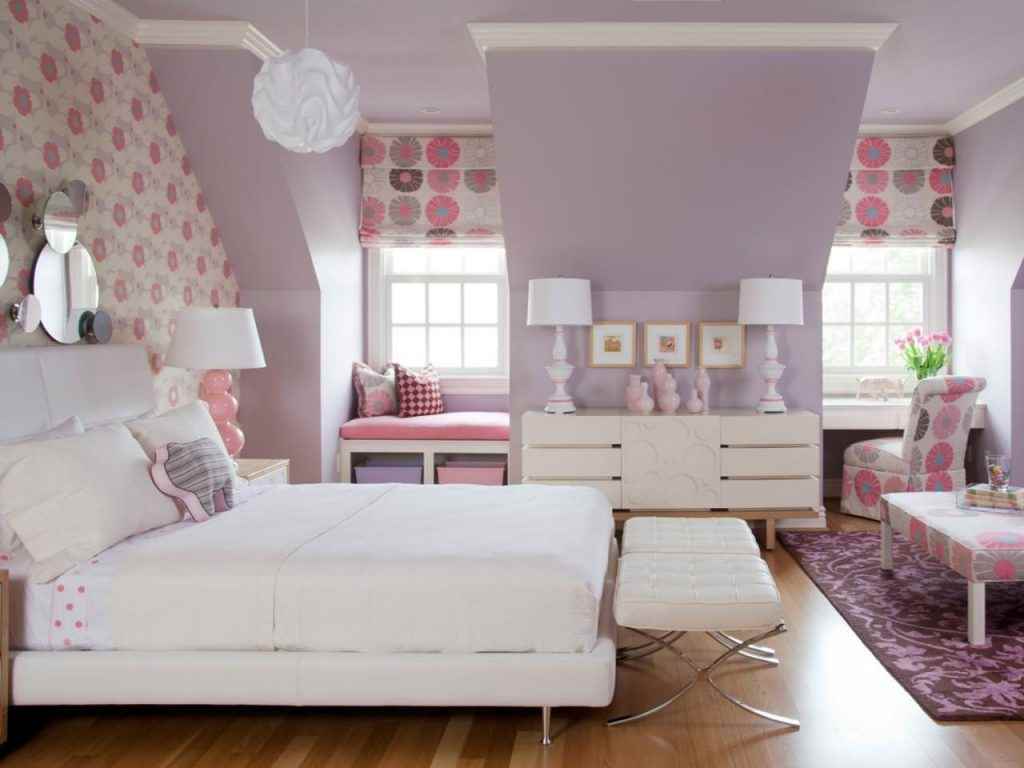
For the bedroom, the right solution would be to use warm pastel shades.
Living room
As a rule, this is the largest and brightest room in the house, therefore light shades and more saturated ones will be appropriate here. Lilac in the interior of the living room looks attractive. It can be used as a primary color and serve as a backdrop for furniture and decor items. Depending on the combination of colors, you can create a diverse design of the room.
- With the addition of cream, coffee shades, a cozy atmosphere will be created in the living room. Leave the upholstered furniture of the same tone, but make the lamps and pillows bright. The textiles on the windows should be slightly lighter.
- You can choose a light gray or cream color for the general background, and highlight the amethyst part of the wall on which to place photos or paintings.
- When choosing a light lilac shade as the dominant color, make one of the walls a more saturated tone - lilac, violet or purple, and you will see how the interior has come to life.

In the living room you need to use light shades
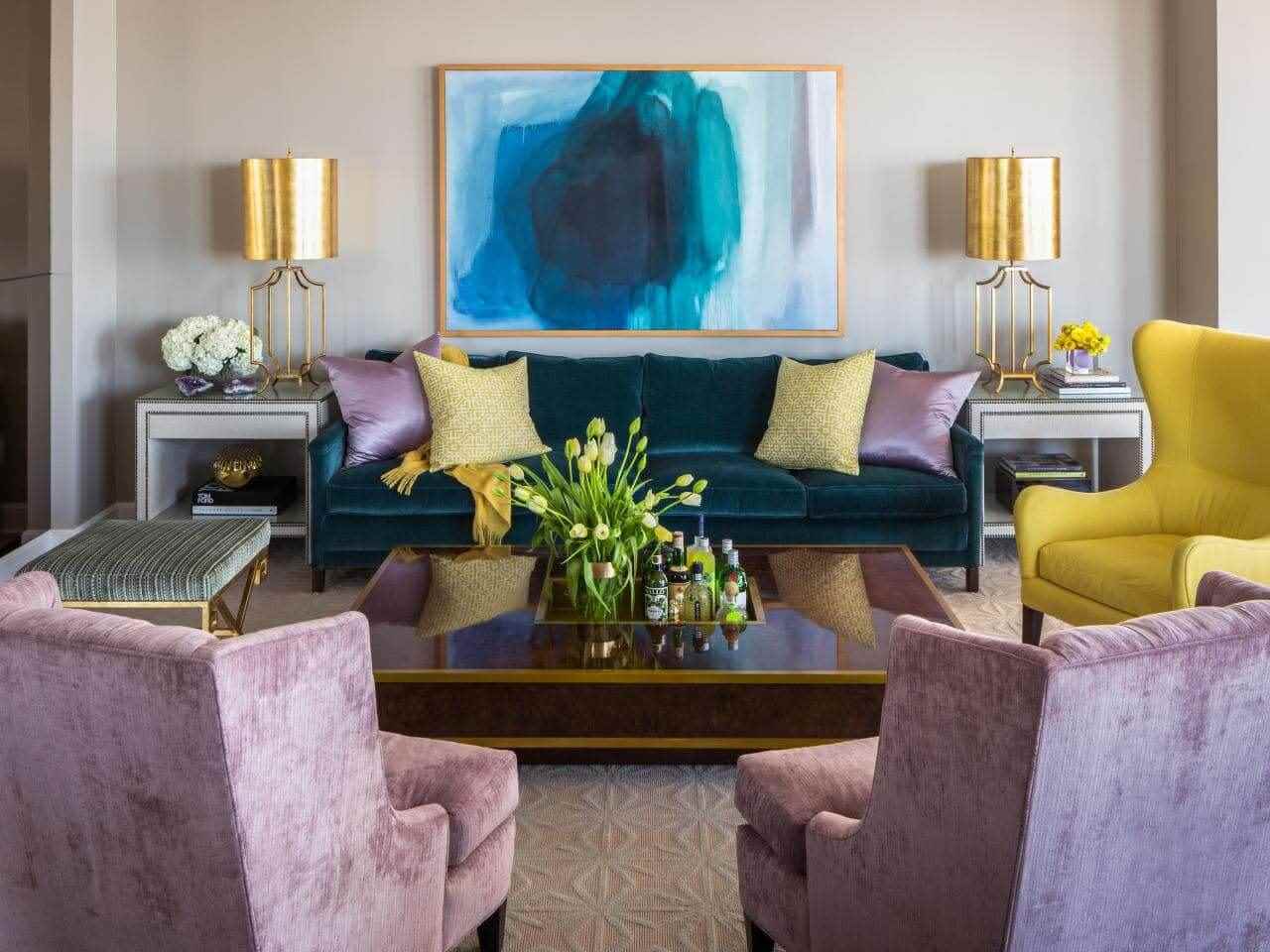
Lilac in the interior of the living room looks attractive

The lilac color in the interior of the living room can be both the main color and the background for furniture or decor
Bedroom
Bright colors for wall decoration are not recommended for her. Black and white combinations look good, complemented by bright lilac, purple details. It can be pillows, drapes, a soft ottoman or a rug by the bed. If you want to make lilac walls, it should be light shades.
Violet tones are also used in other living spaces to help create an attractive design. The main thing is to correctly combine shades with each other so that the effect of color is favorable.
Video: Lilac color in the interior






